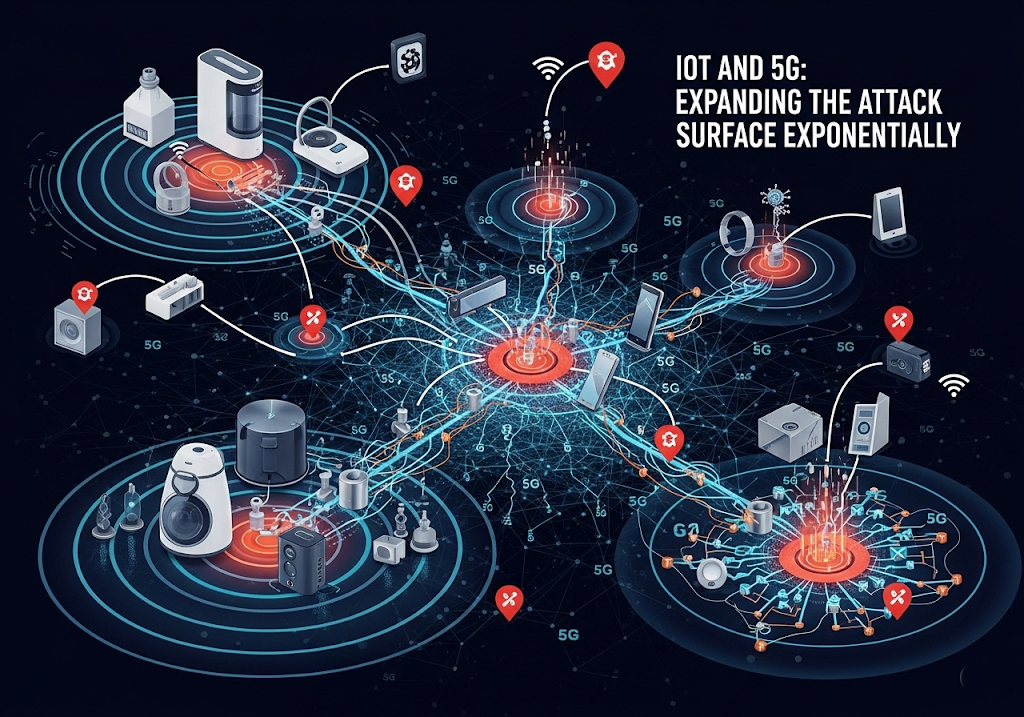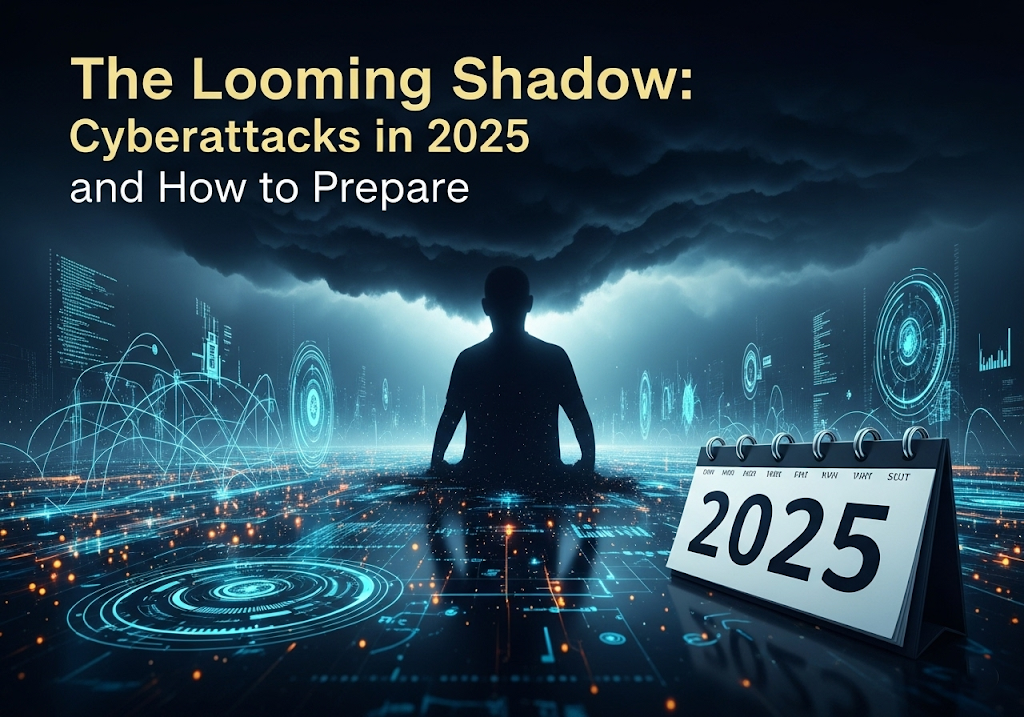The Looming Shadow: Cyberattacks in 2025 and How to Prepare
As we navigate through 2025, the landscape of cyber warfare continues its relentless evolution, posing ever-growing threats to individuals, businesses, and critical infrastructure worldwide. The sophistication and frequency of cyberattacks are not just increasing; they’re transforming, driven by advancements in AI, the pervasive reach of IoT, and the geopolitical tensions that ripple across the digital realm. Understanding these shifts is the first step toward building resilient defenses in an increasingly interconnected and vulnerable world.
The AI-Powered Threat: More Intelligent, More Insidious
One of the most significant shifts in the 2025 cyberattack landscape is the deeper integration of Artificial Intelligence. Malicious actors are no longer relying solely on brute force or simple phishing tactics. Instead, they are leveraging AI to craft highly sophisticated, personalized, and evasive attacks.
Advanced Phishing and Social Engineering: AI algorithms can analyze vast amounts of public data (from social media, news, corporate websites) to create incredibly convincing phishing emails, deepfake voice messages, or even video calls. These AI-generated lures are tailored to individual targets, mimicking the communication styles of trusted colleagues or authorities, making them virtually indistinguishable from legitimate interactions. This significantly increases the success rate of social engineering attacks, which remain the weakest link in many security chains.
Automated Exploit Generation and Evasion: AI is being used to discover vulnerabilities in software and networks faster than human security researchers. Once identified, AI can automate the creation of exploits, dynamically adjusting attack vectors to bypass detection systems. Machine learning models can learn from defensive responses, enabling malware to adapt its behavior, remain dormant, or spread laterally within a network without triggering alarms.
Polymorphic Malware and Ransomware: The AI-driven malware of 2025 is more polymorphic than ever, constantly changing its code and signature to evade antivirus and intrusion detection systems. Ransomware variants are not just encrypting data but also exfiltrating it first, threatening to leak sensitive information if a ransom isn’t paid, doubling the leverage over victims. These operations are becoming highly automated, scaling their reach to thousands of targets simultaneously.
IoT and 5G: Expanding the Attack Surface Exponentially
The proliferation of Internet of Things (IoT) devices, coupled with the rollout of 5G networks, is creating an unprecedentedly vast and often unsecured attack surface. By 2025, billions of interconnected devices – from smart home gadgets and industrial sensors to connected vehicles and medical equipment – are in constant communication.
Botnets of Things (BoTs): IoT devices are notoriously vulnerable due to weak default security, lack of regular updates, and simple processing power. Cybercriminals are increasingly forming massive botnets from compromised IoT devices, which can be harnessed for distributed denial-of-service (DDoS) attacks capable of overwhelming even robust online services. These attacks can cripple businesses, disrupt critical infrastructure, and even cause physical damage.
Supply Chain Vulnerabilities through IoT: As IoT devices become embedded in critical industrial and logistical supply chains, compromising one seemingly innocuous device can provide a gateway into larger, more sensitive networks. This introduces new vectors for espionage, sabotage, and data theft that are difficult to detect.
5G as an Accelerator: While 5G promises faster speeds and lower latency, its expanded bandwidth and increased connectivity also create more pathways for attackers. The sheer volume of data flowing through 5G networks makes monitoring and anomaly detection more challenging, giving attackers more cover for their malicious activities.

Geopolitical Tensions Fueling State-Sponsored Attacks
The geopolitical climate in 2025 is a significant driver of cyber warfare. Nation-states are increasingly using cyberattacks as a tool for espionage, destabilization, and even overt acts of aggression, often targeting critical national infrastructure (CNI).
Targeting Critical Infrastructure: Energy grids, water treatment plants, transportation systems, and healthcare networks are prime targets for state-sponsored actors seeking to disrupt rival nations. These attacks can have devastating real-world consequences, ranging from widespread power outages to compromised public health systems.
Information Warfare and Disinformation: Cyberattacks are integral to information warfare. Nation-states are employing sophisticated tactics to spread disinformation, influence public opinion, and sow discord within adversary countries. This includes targeted hacks of media outlets, social media manipulation, and the use of AI to generate convincing fake news articles or propaganda videos.
Economic Espionage: State-sponsored groups are relentlessly targeting corporations, research institutions, and governmental agencies to steal intellectual property, trade secrets, and sensitive strategic information, gaining an economic or military advantage.
The Path Forward: Building Resilience in 2025

While the threat landscape of 2025 seems daunting, robust strategies can significantly bolster defenses.
Adopt a Zero-Trust Architecture: Assume no user or device, whether inside or outside your network, is trustworthy until verified. Continuously authenticate and authorize access requests.
Prioritize AI-Driven Security Solutions: Leverage AI and machine learning in your defense systems to detect anomalies, identify sophisticated threats, and automate responses faster than humanly possible.
Strengthen Supply Chain Security: Vet third-party vendors rigorously, ensure secure configurations for all IoT devices, and implement continuous monitoring across your supply chain.
Invest in Human Training and Awareness: Employees remain the most common target. Regular, realistic training on identifying phishing attempts, practicing good cyber hygiene, and understanding social engineering tactics is crucial.
Implement Robust Incident Response Plans: Develop and regularly test comprehensive incident response plans. Knowing how to react swiftly and effectively to a breach can minimize damage and recovery time.
Patch Management and Regular Audits: Maintain a disciplined approach to patching software and operating systems. Conduct regular security audits and penetration testing to identify and remediate vulnerabilities before attackers can exploit them.
The year 2025 demands a proactive and multi-layered approach to cybersecurity. The threats are more intelligent, pervasive, and politically charged than ever before. By understanding these challenges and implementing advanced defensive strategies, individuals and organizations can navigate the complexities of the digital age with greater resilience and security. The time to prepare is now.



